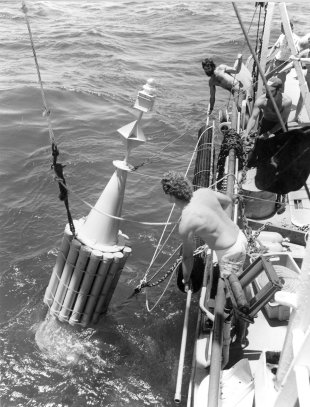
Use of FADs in NSW
What are FADs and what do they attract?
By definition, man-made FADs can be moored or free-floating structures placed in the open ocean with the primary function of aggregating pelagic fish such as mahi-mahi (Coryphaena hippurus), also known as dolphinfish. The reasons surrounding a FADs ability to aggregate pelagic fish is a topic that has attracted considerable scientific debate. While, it has been suggested that some species won’t aggregate around a FAD unless prey is present (eg striped marlin – Tetrapturus audax), other species including mahi-mahi are attracted to the structure of the FAD alone, possibly for use as a resting place or geographical reference point for feeding or school recomposition.
Most fish species that are attracted to the NSW FADs are seasonal pelagic fish whose arrival off our coast coincides with the warm water that is delivered by the EAC over summer and autumn. The FADs work most effectively when the seawater temperature exceeds 20°C. For this reason they are installed for the summer fishing season and serviced during the winter months to ensure longevity. Various FAD designs have been tested to find the best suited FAD design to withstand the particularly harsh sea conditions experienced off the NSW coast.
History of FADs in NSW
FADs were first used by indigenous fishermen of the tropical Pacific by floating palm fronds on top of the ocean. FADs of various designs are now used extensively around the world for recreational fisheries enhancement. FADs were trialled by Fisheries NSW in the 1980s, but the cost of deploying and maintaining these large structures was prohibitively high and the program was discontinued.
Following introduction of the recreational fishing licence in 2001, the Department began investigating new designs of FADs which would withstand the harsh coastal conditions of eastern Australia. The FADs were the first Recreational Fisheries Enhancement project. A trial of 5 FADs began in 2002 using a much smaller and cheaper FAD design consisting of a large floating buoy anchored to the seafloor, which would provide a dedicated and productive fishing location for recreational fishers. Following the initial success of this pilot program and further refinement of the FAD design, the program was expanded to 10 FADs in 2003. The popularity of the program with fishers led to more FADs being progressively deployed each season offshore from different ports. A total of 30 FADs are currently deployed and maintained by the Department from Tweed Heads in the state's north to Eden in the south.


